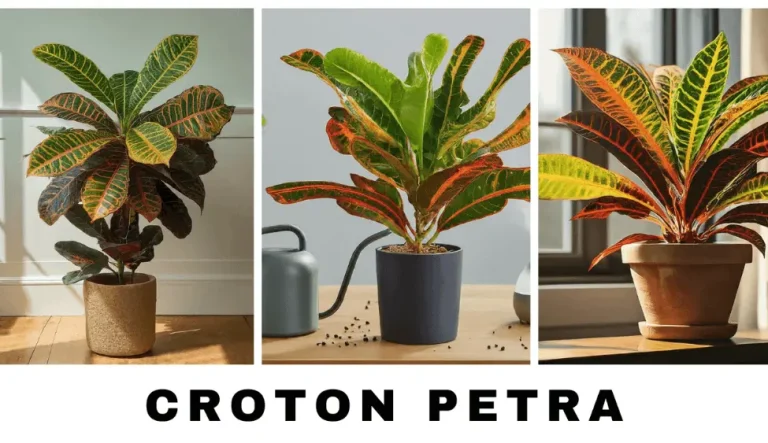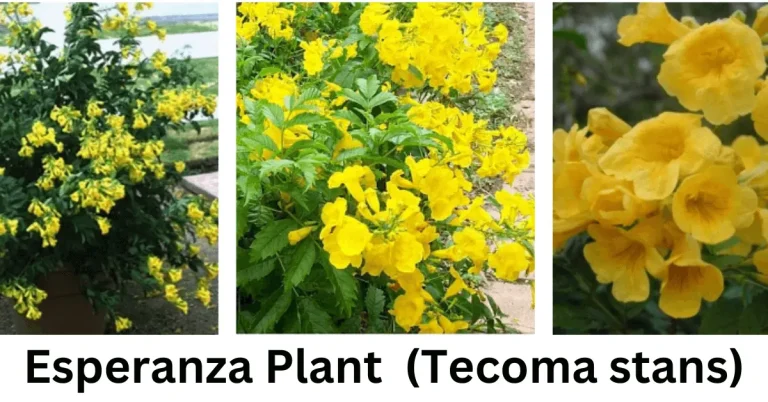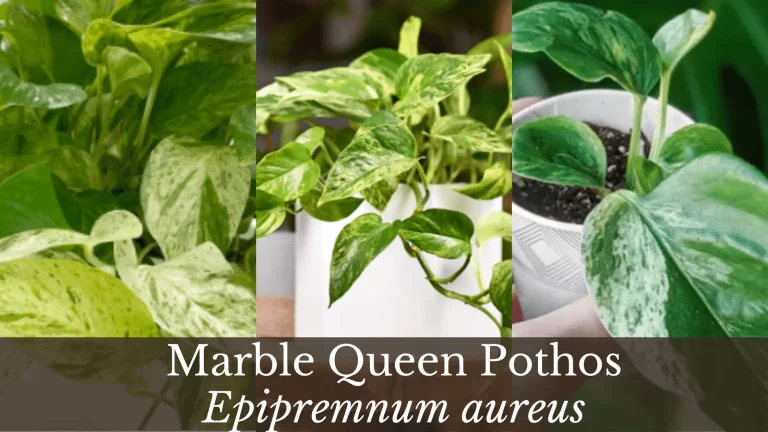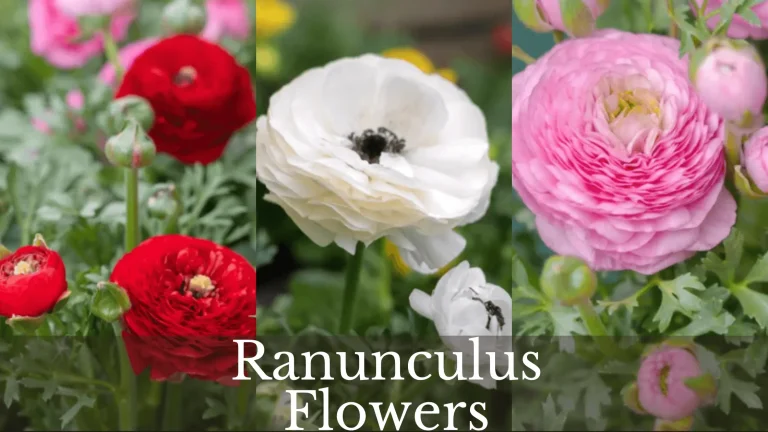Hickory Tree of Ohio | 6 Types – Carya Species
Hickory trees have always attraction for me. It is difficult to stroll through the Ohio’s forest without being mesmerized by the stately hickory trees of Ohio. These Hickories of Ohio are the representation of fortitude, greenery, peace, and tranquility. Their branching canopies are the dense roof for the wildlife like the Hickories of Georgia. Moreover, they serve more than this for Ohio’s landscape.
- They are the source of beautification
- They are the house of wildlife
- Ohio’s Hickory Flora serve as a food source for birds and animals.
- Hickory tree’s dense foliage provide shelter to the 1300 species of birds common in Ohio.
Hickory Tree Ohio
There are 6 different types of Hickory Trees in Ohio.
- Red Hickory – Carya glabra
- Shellbark Hickory – Carya laciniosa
- Shagbark Hickory
- Mockernut Hickory
- Bitternut Hickory
In this article, we will try to know about their characteristic along with their identifications. Keep reading this.
Red Hickory
| Scientific Name | Carya glabra |
| Common Name | Red Hickory / False Pignut |
| Habitat | Native to Norths (Ohio) |
| Average Height | 18-25 meter (65 – 85 feet) |
| Trunk Diameter | 2.5-3 feet |
| Flower | Small (2-3 cm) |
| Cones | Small Green (2 inches in diameter) |
| Leaves | 8-10 inches |
| Leaflets | Oval Shaped (5-7 in number) |

Red Hickory Tree Ohio
Features
The Red Hickory, sometimes called “False Pignut”, most common in Ohio. They have recorded their existence since 170-200 years. They bear leaves (8-10 inches long). The leaves are compound with 5-7 oval-shaped leaflets. These leaflets are green, with serration on both sides and edged. Tree bear short, crooked branches pointing downward. Leaves and branches turn yellow in fall season.
This type (Red Hickory) are called medium sized those can achieve height of 80 to 100 feet, with 2 to 3 feet of trunk diameter. Its crown is pyramid-like and slender. This tree showcases somewhat rugged bark.
The tree bears oval to pear-shaped green fruit, approximately 1 to 1 1/4 inches long. The fruit’s outer shell is paper-thin and naturally peels off easily to its root. At maturity, these turn brown. The outer bark of the fruits is light grey in shade and shaggy. It peels off easily into long pieces with age.
What are the Uses of Red Hickory Trees?
- The nut is inedible for human but are important source of food for squirrels, hogs, and birds.
- Its wood is durable and resilient, The Red Hickory tree’s timber is used in making tool handles, and frames.
- It is also used as fuel wood.
- Moreover, its wood is used in wagon wheels as well.
Shellbark Hickory
| Scientific Name | Carya laciniosa |
| Common Name | Shellbark Hickory / King Nut |
| Habitat | Native to Norths (Ohio) |
| Average Height | 20-24 meter (70 – 90 feet) |
| Trunk Diameter | 2.5-3 feet |
| Flower | Small (2-3 cm) |
| Cones | Small Green fruits (2-3 inches in diameter) |
| Leaves | 12-20 inches |
| Leaflets | Lance-shaped (7-9 in number) |

Shellbark hickory Tree Ohio
Features
This deciduous tree is the most uncommon species. Shellbark hickory trees have long life span (500 years). Their single trunk height may reach up to 90 feet. This trunk is branchless.
Leaves are green, compound ranging 12-20 inches in length. Each leaf has 7-9 glossy leaflets. These leaves turn yellow in autumn adding aesthetic values to the Ohio flora ., edible nuts, and hardwood are the characteristic features of Shellbark Hickory.
What are the Uses of Shellbark Hickory Trees?
- Edible nuts are a source of food for humans and birds.
- Hardwood is useful for making furniture goods and the construction industry. With compound leaves (cluster of 7 leaflets).
- Fruit, it is truly known as “King Nut”.
Shagbark Hickory Tree
| Scientific Name | Carya ovata |
| Common Name | Shagbark Hickory / Medium-sized Hickory |
| Habitat | Native to Norths (Ohio), Love to grow on damp shady places |
| Average Height | 15-18 meter (50 – 60 feet) |
| Trunk Diameter | 2.5-3 feet |
| Flower | Small (2-3 cm) |
| Cones | Small oval shaped Nuts (1-2 inches in diameter) |
| Leaves | 8-14 inches |
| Leaflets | Pointed-shaped (5-7 in number) |

Shagbark Hickory tree Ohio
Features
These are medium to small heighted hickory trees of Ohio. Their height may range from 40-60 feet. They have straight trunk with thin crown. Moreover, the thin crown is due to the narrow leaves. All these leaves are directly linked to the central stalk. These leaflets form a bunch of five pairs, two lower are smaller while the upper three are larger.
Moreover, the leaves are yellowish green in color. In fall, they appear yellow striking. All this is added by the gray dark bark of the tree. This bark can be peeled off easily into strips leaving a shaggy appearance thus named as Shagbark Hickory Trees.
The nuts are with edible kernel which are green but turn brown at maturity. Nuts are small, oval shaped. It is equally liked by the humans and animals (rodents and birds).
What are the Uses of Shagbark Hickory Trees?
Shagbark tree and its fruit is of following importance;
- Wood – It is usually tough and hard. It is used to make hand tools, handles, wagon wheels.
- Nuts – These are edible. They are also the source of preserving species status for future generation.
Mockernut Hickory Tree
| Scientific Name | Carya tomentosa |
| Common Name | Mockernut Hickory / White Hickory |
| Habitat | Native to North, Grow on damp places |
| Average Height | 14-25 meter (50 – 80 feet) |
| Trunk Diameter | 2.5-3 feet |
| Flower | Small (4-5 cm) |
| Cones | Cherries |
| Leaves | 2-3 inches |
| Leaflets | Pointed-shaped (7-9 in number) |
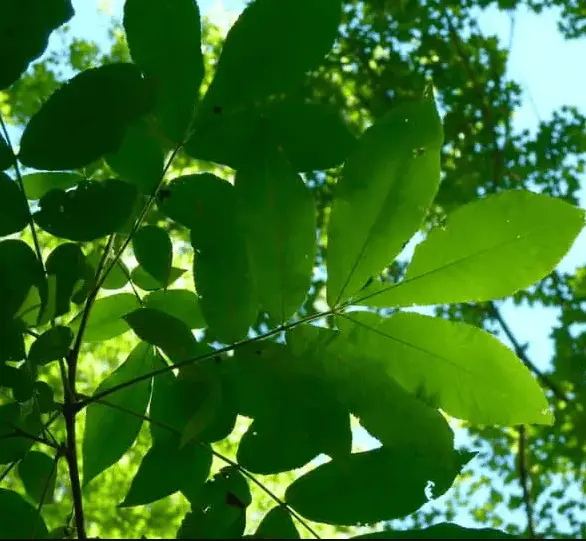
Mockernut Hickory Tree Ohio
Features
The word “Tomentosa” means “covered with dense hair”. This is the sign of identification of this species. It is also the taller one like the Bitternut Hickory trees. It has larger round crown with leaves and leaflets. There are 7-9 leaflets in each compound leaf. These are green and hairy. However, the bark is gray to dark in colour.
Their fruit is cherry. They are green when young and turn brown at maturity. The kernel of these cherries is edible, enclosed within the larger sized nut, known as “Mockernut”. Thus the tree is called Mockernut Hickory Tree. These nuts are the food source for many birds and wild animals.
This species can thrive 300-450 years. However, it bear fruits after 20-25 years of age.
What are the Uses of Mockernut Hickory Trees?
- Wood – It is string and durable and is used for making furniture
- Coal – It helps in smoking meat and giving it a lovable flovour.
- Food – Immature flower and nuts are edible by the wildlife and birds.
Bitternut Hickory Tree
| Scientific Name | Carya cordiformis |
| Common Name | Bitternut Hickory / Bitter Pecan / The Tallest Hickory |
| Habitat | Native to North, Grow on damp places |
| Average Height | 15-30 meter (50 – 100 feet) |
| Trunk Diameter | 2.5-3 feet |
| Flower | Small (2-3 cm) |
| Cones | Nuts |
| Leaves | 6-10 inches |
| Leaflets | Pointed-shaped (7-11 in number) |

Bitternut Hickory tree Ohio
Features
This type of Hickory Tree of Ohio are the tallest among all the species. Moreover, its trunk is strong, tall, unbranched, straight, and has open crown. Leaves are small and compound 6-10 inches in size and have 7-11 leaflets. All these leaflets are alternatively connected. The leaves are glossy green at top to reflect more light.
They bear nuts as a fruit. The nut is of bigger size, 2-4 inches in diameter. However, the fruit is too bitter to eat and thus named as Bitternut Hickory. The husk covering the nut is hairy, yellowish, and light.
What are the Uses of Bitternut Hickory Trees?
- Wood – It is used for smoking meat products.
- Oil – Oil is used as fuel in lamps
Conclusion
Hickory Trees list of Ohio includes; Shellbark, Shagbar, Red, Bitternut, and Mockernut. All these Carya species are important part of the flora of the North. Moreover, these love to grow in damp shady places. They are useful as a source of wood, fruits, nuts, oil, and fuel. Wood and coal help in flavoring smoky meat. There is a need to conserve this biota.
I’m Dr Qaiser Maqsood (PhD), a dedicated researcher and expert in Biological Sciences, Gardening, Bio-Diversity, Ecology, and Environmental Sciences. I’m much concerned about Environmental Pollution, Climate Change, Plantation, Gardening, and Global Warming. My passion is to explore innovative solutions in all these fields.
Be aware that we have ONLY ONE EARTH. Protect it!!

